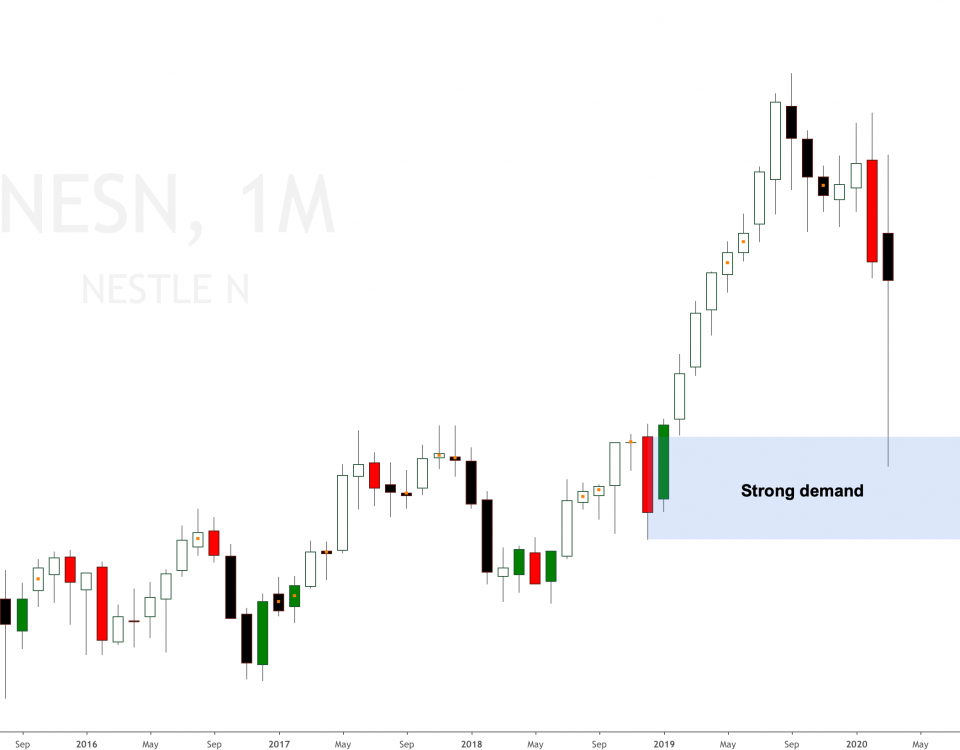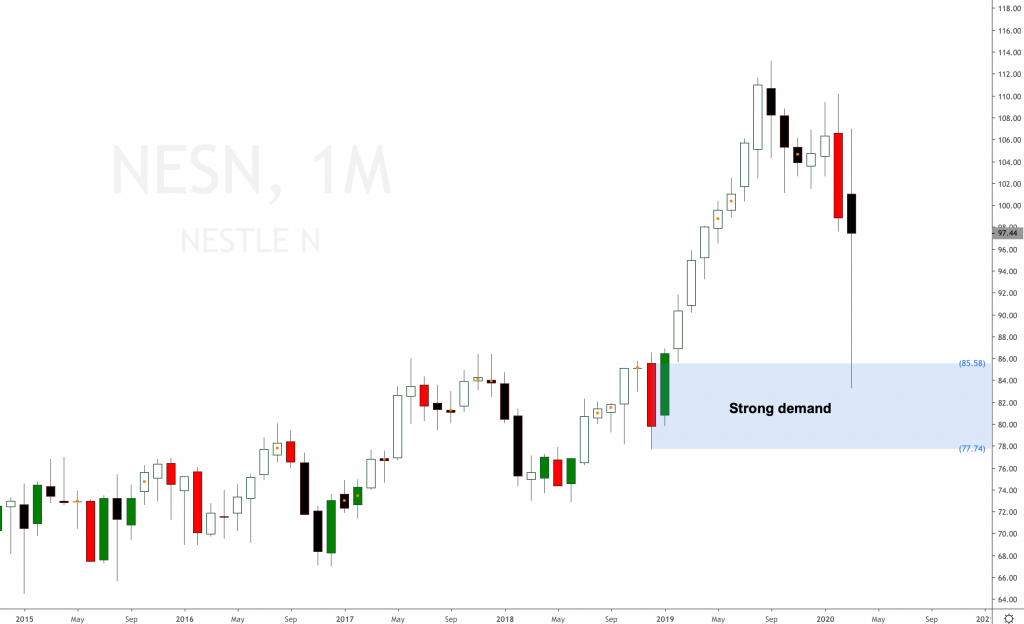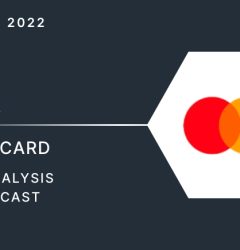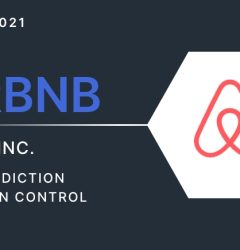01 Apr

Nestlé S.A. is a Swiss multinational food and drinks processing conglomerate corporation headquartered in Vevey, Vaud, Switzerland. It is the largest food company in the world, measured by revenues and other metrics, since 2014.
Nestle stock price action
As expected and explained in a previous Nestle stock analysis prediction post, the stock has dropped to the strong monthly imbalance mentioned last August 2019. Going long after such a strong impulse on Nestle S.A (NESN) stock was not allowed as supply and demand traders. If you are an intraday trader, you may have had losses trying to short the stock without being aware of the huge imbalance in the monthly timeframe.

Nestle stock analysis using supply and demand strategy
This is the kind of price action technical analysis you will learn in our trading community. You will learn how to locate new supply and demand imbalances and trade without using any indicators, no news, no fundamental analysis, no earnings announcements, no volume or VSA analysis. Just supply and demand imbalances.
Trading supply and demand imbalances is ideal for beginners and those with a full or half-time job, and you won’t need to stay in front of the computer all day long trying to move price action with your mind.
Nestle stock scenario
As supply and demand traders, we do not need to pay attention to the news, fundamentals or any earnings reports. Once a big timeframe imbalance has gained control, earnings do the opposite and react strongly to those imbalances. Why do you see positive earnings and then the underlying stock drops like a rock, or a negative earnings announcement and the stock rallies like a rocket out of control? You are probably missing the fact that there are big imbalances in gaining control.
Unless you are doing very short-term trading and scalping, you should not worry about fundamentals or earnings announcements on Nestle (NESN) stock.
You can use these imbalances to plan your trades in lower timeframes. Trading is just waiting for the right trigger points and scenarios to present themselves, this game has a name, and it’s called the waiting game. We must patiently wait for the correct scenarios and setups to happen and wait for the price to pullback or dip into the price levels we want to trade; in our case, these price levels are made of supply and demand imbalances.
Join our best-trend trading course to learn how to trade using our supply and demand stock trading strategy.
There are several ways of buying stocks and futures. When trading stocks, you can buy shares of the underlying stock or use options strategies to go long or short at these specific supply and demand levels, long calls or long puts or spreads. You can even buy a CFD (contracts for difference) if you are in a country where it’s allowed.









